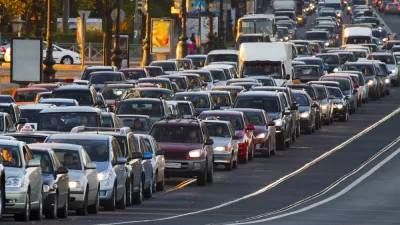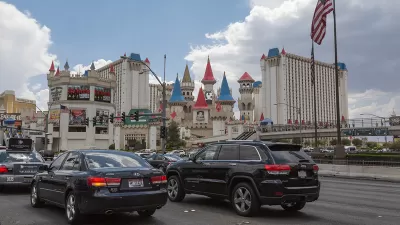Last year, the U.S. increased oil consumption by two percent, surpassing the increase in China for the first time in more than a decade according to a new IEA report. How does this increase square with peak car, peak VMT, and peak oil consumption?

First, the basics on global oil consumption. "The International Energy Agency (IEA) tracks which countries use how much oil -- and the United States is always at the top of the list," writes (and states - listen here) Adriene Hill, who reports on the "individual relationship to sustainability and the environment" for Marketplace.
“Every single day, just over 19 million barrels of oil are consumed in the U.S.,” says Matt Parry, senior oil market analyst for the agency. That accounts for about 20 percent of global oil use [91.2mbd]. China comes in second, using about 10 million barrels a day.
However, in 2013, the two percent increase in U.S. oil consumption exceeded China's increase according to IEA's Oil Market Report for January. Parry attributes the rise to increased economic activity as the U.S. emerges from its recession. Hill adds that increased oil production resulted in reduced domestic (Western Texas Intermediate benchmark) prices, increasing usage by both industry and in transportation.
Bryan Walsh of Time Science & Space provides the data: "U.S. demand for oil grew by 390,000 barrels a day (bbd) or about 2%, after years of decline. For the first time since 1999, U.S. demand for oil grew faster than China’s demand, which rose by 295,000 bbd, the weakest increase in six years. So not only is the U.S. producing a gusher of oil, but it’s also consuming more crude."
The increased consumption wasn't confined to the U.S. Other developed nations also experienced increases, according to Euronews. "(IEA) predicts consumption of crude will increase by 1.3 million barrels per day this year to a total of 92.5 million barrels per day, up from 91.2 million last year and 90 million in 2012," they wrote.
And despite increased shale oil production in the U.S. which Walsh indicates was 990,000 bbd, the most in 20 years, they write that "this year OPEC will also have to pump more to meet increasing demand."
However, the increased oil consumption in the U.S. is not expected to continue, writes Hill, unlike the forecast for China.
“Over time we think that U.S. demand is going to be flat at best, or probably trending a bit down,” says Mark Schwartz, president of PIRA Energy group, a consulting firm. China, on the other hand, likely has a whole lot of growth in its future. More people there are looking to buy cars, to travel, and to consume more like we do here in the United States.
Interestingly, Walsh questioned the latest study by the University of Michigan Transportation Research Institute's Michael Sivak, which confirms the U.S. has reached 'peak car'.
That’s arguable—the drop in the percentage of households with cars could well have more to do with high unemployment and slugging economic growth than anything else.
FULL STORY: Rising demand for oil: 'Growth is easy when you've been in the pits'

Study: Maui’s Plan to Convert Vacation Rentals to Long-Term Housing Could Cause Nearly $1 Billion Economic Loss
The plan would reduce visitor accommodation by 25,% resulting in 1,900 jobs lost.

North Texas Transit Leaders Tout Benefits of TOD for Growing Region
At a summit focused on transit-oriented development, policymakers discussed how North Texas’ expanded light rail system can serve as a tool for economic growth.

Why Should We Subsidize Public Transportation?
Many public transit agencies face financial stress due to rising costs, declining fare revenue, and declining subsidies. Transit advocates must provide a strong business case for increasing public transit funding.

How to Make US Trains Faster
Changes to boarding platforms and a switch to electric trains could improve U.S. passenger rail service without the added cost of high-speed rail.

Columbia’s Revitalized ‘Loop’ Is a Hub for Local Entrepreneurs
A focus on small businesses is helping a commercial corridor in Columbia, Missouri thrive.

Invasive Insect Threatens Minnesota’s Ash Forests
The Emerald Ash Borer is a rapidly spreading invasive pest threatening Minnesota’s ash trees, and homeowners are encouraged to plant diverse replacement species, avoid moving ash firewood, and monitor for signs of infestation.
Urban Design for Planners 1: Software Tools
This six-course series explores essential urban design concepts using open source software and equips planners with the tools they need to participate fully in the urban design process.
Planning for Universal Design
Learn the tools for implementing Universal Design in planning regulations.
City of Santa Clarita
Ascent Environmental
Institute for Housing and Urban Development Studies (IHS)
City of Grandview
Harvard GSD Executive Education
Toledo-Lucas County Plan Commissions
Salt Lake City
NYU Wagner Graduate School of Public Service




























